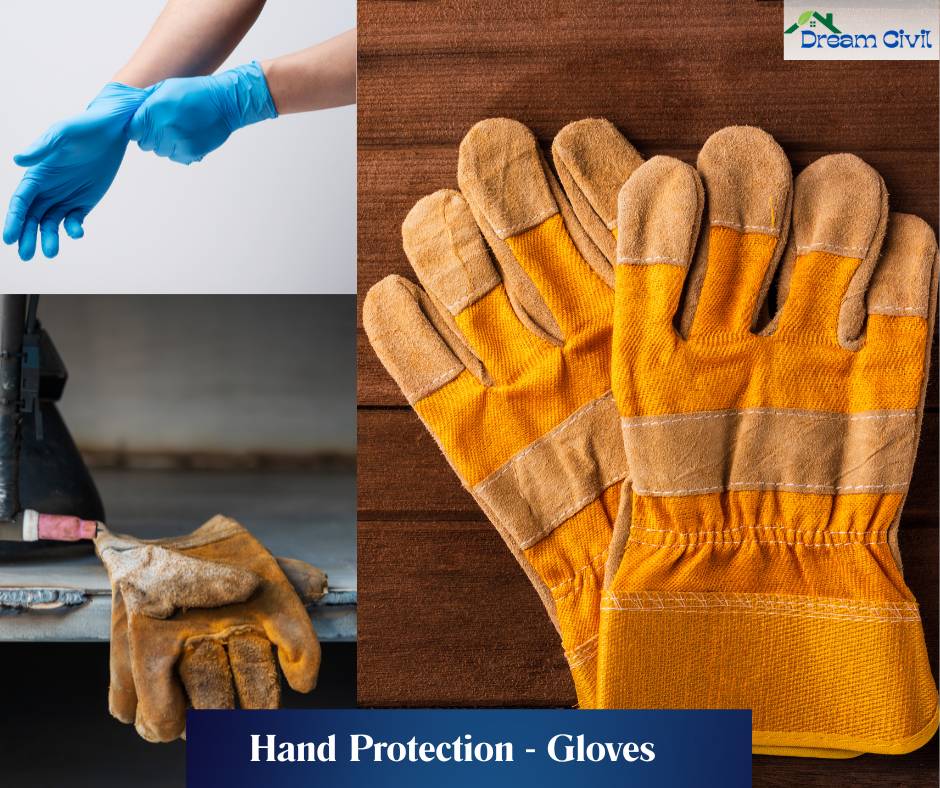Table of Contents
✓ Our hands play an irreplaceable role in our daily lives, so protecting the hands from potential harm is vital.
✓ When handling sharp objects, dealing with hazardous chemicals, or maintaining hygiene in sensitive environments, selecting gloves is paramount.
A. Types of Hand Protection Gloves
a. General Purpose Gloves:

Use: General-purpose gloves are tailored for everyday tasks, providing a reliable defense against cuts, abrasions, and dirt.
Importance: These gloves offer fundamental protection for routine activities, effectively minimizing the risk of commonplace injuries.
b. Chemical-Resistant Gloves:

Use: Chemical-resistant gloves are a rigid shield against hazardous chemicals, preventing direct skin contact and potential harm.
Importance: They are vital in industries where constant exposure to chemicals is a general risk, ensuring the highest safety for hands.
c. Cut-Resistant Gloves:

Use: Cut-resistant gloves are precision-engineered to protect against sharp objects, significantly mitigating the risk of cuts.
Importance: These gloves are required in environments where the handling of sharp tools or materials is routine, guaranteeing the safety of workers.
d. Disposable Gloves:

Use: Disposable gloves are a tight barrier against contaminants in medical, food, and cleanliness-sensitive tasks.
Importance: These gloves are crucial for upholding hygiene standards in healthcare and food service, effectively preventing the spread of contaminants.
B. Importance of Hand Protection Gloves
a. Injury Prevention:
Gloves act as a rigid shield, systematically reducing the risk of cuts, chemical exposure, and various injuries during various tasks.
b. Hygiene Control:
Particularly essential in healthcare and food service industries, gloves are a frontline defense, preventing contamination and maintaining a sterile environment.
c. Specialized Protection:
Tailored gloves offer a nuanced and specific defense against unique hazards, ensuring safety across diverse work settings.
C. Tips for Effective Hand Protection
a. Task-Based Selection:
Optimal protection is achieved by selecting gloves based on the nuanced requirements of specific tasks and associated hazards.
b. Proper Fit:
Proper fit of the gloves is vital for gaining maximum security against different harms and hazards.
c. Regular Inspection:
Routine glove inspection is necessary, with damaged gloves immediately replaced to maintain effectiveness.
d. Hand Hygiene Practices:
Adhering to recommended hand hygiene practices, especially when employing disposable gloves, is essential to prevent contamination and uphold overall safety standards.
| Read More: 15+ Safety Equipment List. |
| Verified Article By Er. Madhu Krishna Poudel |

